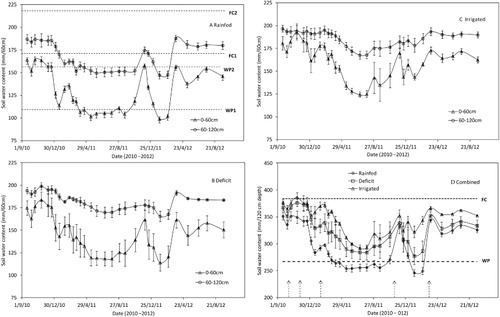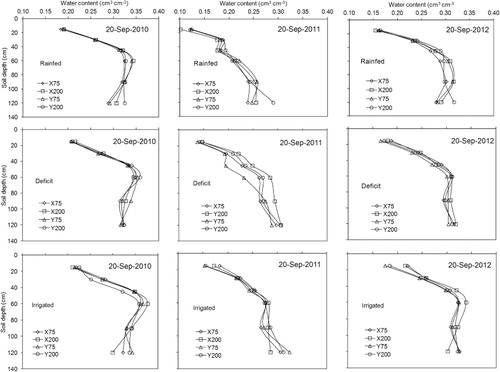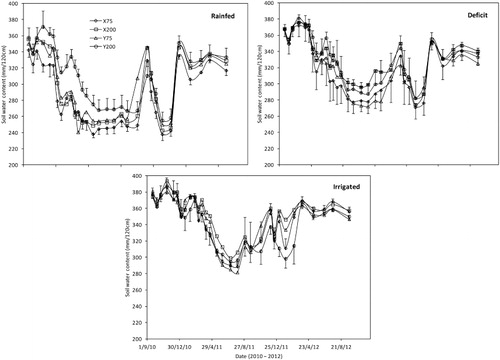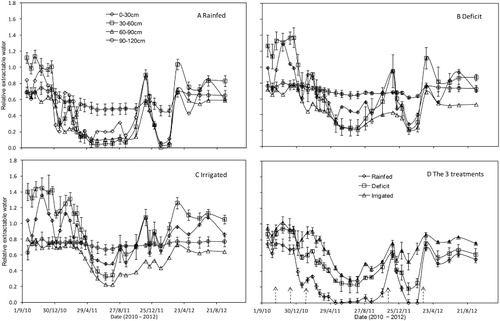Figures & data

Table 1 Physical characteristics of the soil at the experimental site.
Table 2 Amount of irrigation water applied to the three water treatments during the two experimental seasons (2010–11 and 2011–12).
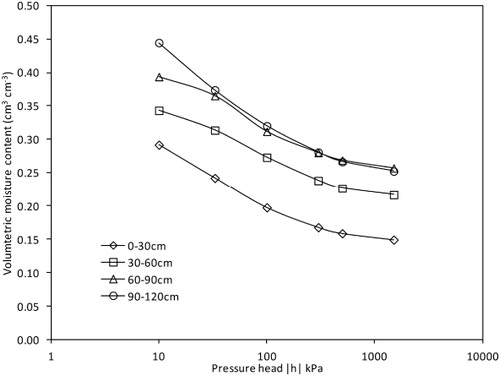
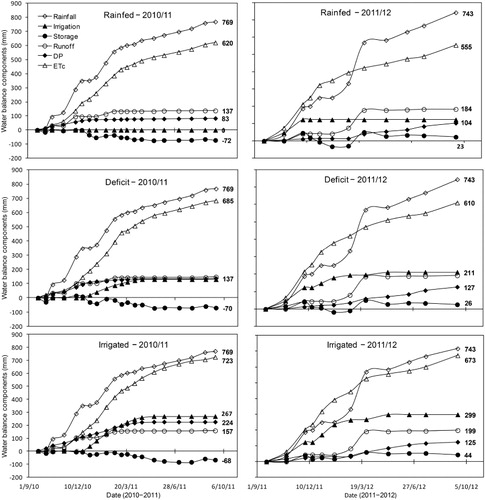
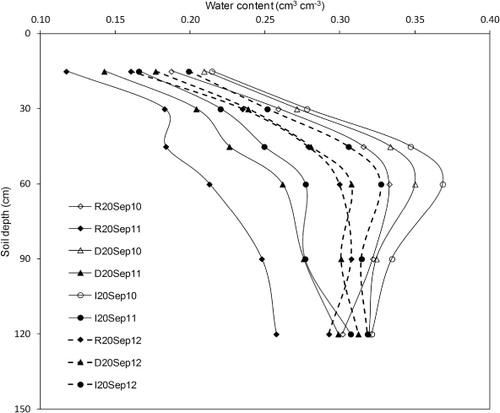
Table 3 Seasonal and annual water balance components of rainfed, deficit irrigated and fully irrigated olives during the two experimental years (2010–11 and 2011–12).
